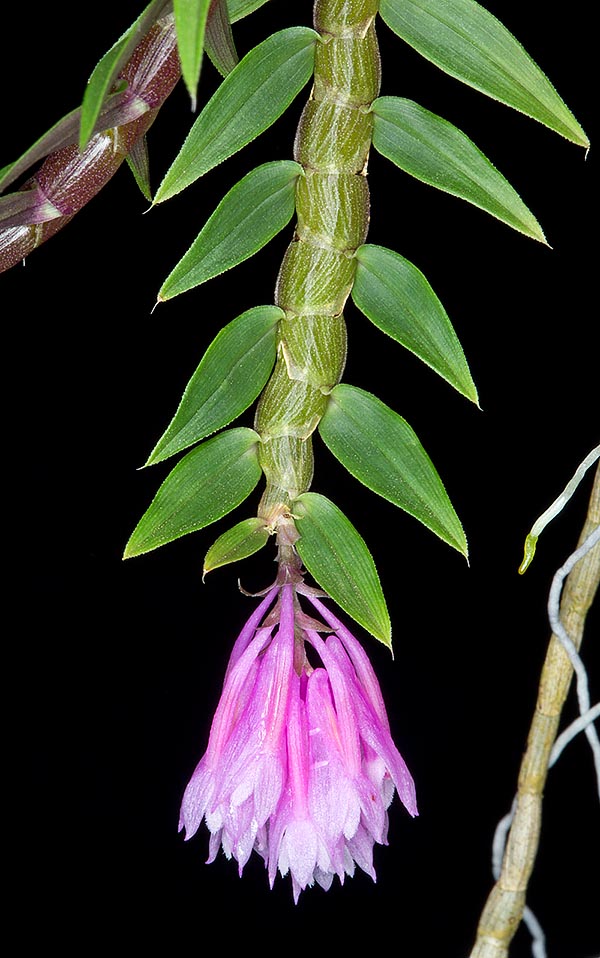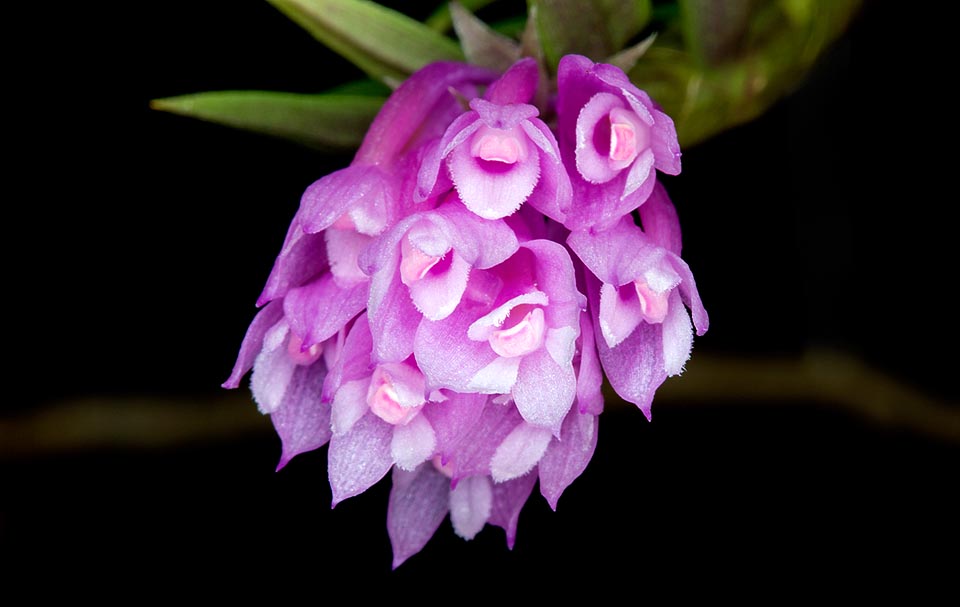Family : Orchidaceae

Text © Pietro Puccio

English translation by Mario Beltramini

The Dendrobium limpidum is an eastern New Guinea deciduous epiphyte © Giuseppe Mazza
The name of the genus is the combination of the Greek substantives “δένδρον” (dendron) = tree and “βίος” (bios) = life, with reference to the numerous species of the genus living on the trees; the name of the species is the Latin adjective “limpidus, a, um” = bright, clear, with reference to the colour and the “clear”, evident, difference between this and the Dendrobium dichaeoides Schltr. (1912) with whom is frequently mistaken, as specified by the authors.
The Dendrobium limpidum Schuit. & de Vogel (2003) is a deciduous epiphytic species with stems at times ramified, close, drooping, enlarged towards the apex, 8-35 cm long, of 0,7 cm of maximum diameter and internodes of about 0,5 cm, provided of leaves for all their length with foliar sheaths wrapping the stem initially of reddish colour.
Alternate, distichous, leaves all facing the same side, ovate to ovate-lanceolate with acute apex and irregularly papillose margins, 1,3-1,6 cm long and 0,3-1 cm broad, of dark green colour, coriaceous.
Compact inflorescences from the upper nodes, of the new pseudobulbs as well as of the older ones devoid of leaves, bearing up to 10 flowers of more or less intense mauve colour, luminous, 1-1,5 cm long, with pedicel and ovary 1,6-1,9 cm long.
Ovate-elliptical sepal with piculate apex, 0,5 cm long and 0,2 cm broad, ovate-elliptical lateral sepals with obtuse apex, 1,4 cm long and 0,3 cm broad, united at the base to form a sort of a conical spur (mentum) 0,9 cm long. Elliptical petals with obtuse apex and finely eroded margins, about 4,5 mm long and 1,5 mm broad.
Spatulate labellum with obtuse apex and margin finely eroded in the second half, about 1,2 cm long and 0,4 cm broad, and 2 mm long column.
The most evident differences with the Dendrobium dichaeoides Schltr. (1912) with which, as previously said, is often mistaken, are the deciduous leaves, the drooping posture, the stems rooting only at the base and the margins of the petals and of the labellum finely eroded. It reproduces by seed, in vitro, and by division, with each section provided of at least 3-4 pseudobulbs, at the vegetative restart.
Of easy cultivation, floriferous with long lasting flowers, some weeks, requires a luminous and aerated position, intermediate temperatures, 18-30 °C, with lowest winter night values not under the 15 °C, and high atmospheric humidity, 75-90%.

Drooping posture with 8-35 cm stems. The compact inflorescences have even about ten mauve flowers, luminous, long lasting. Of easy cultivation © Giuseppe Mazza
The species is reported in the appendix II of the CITES (species whose trade is internationally ruled).
→ For general notions about ORCHIDACEAE please click here.
